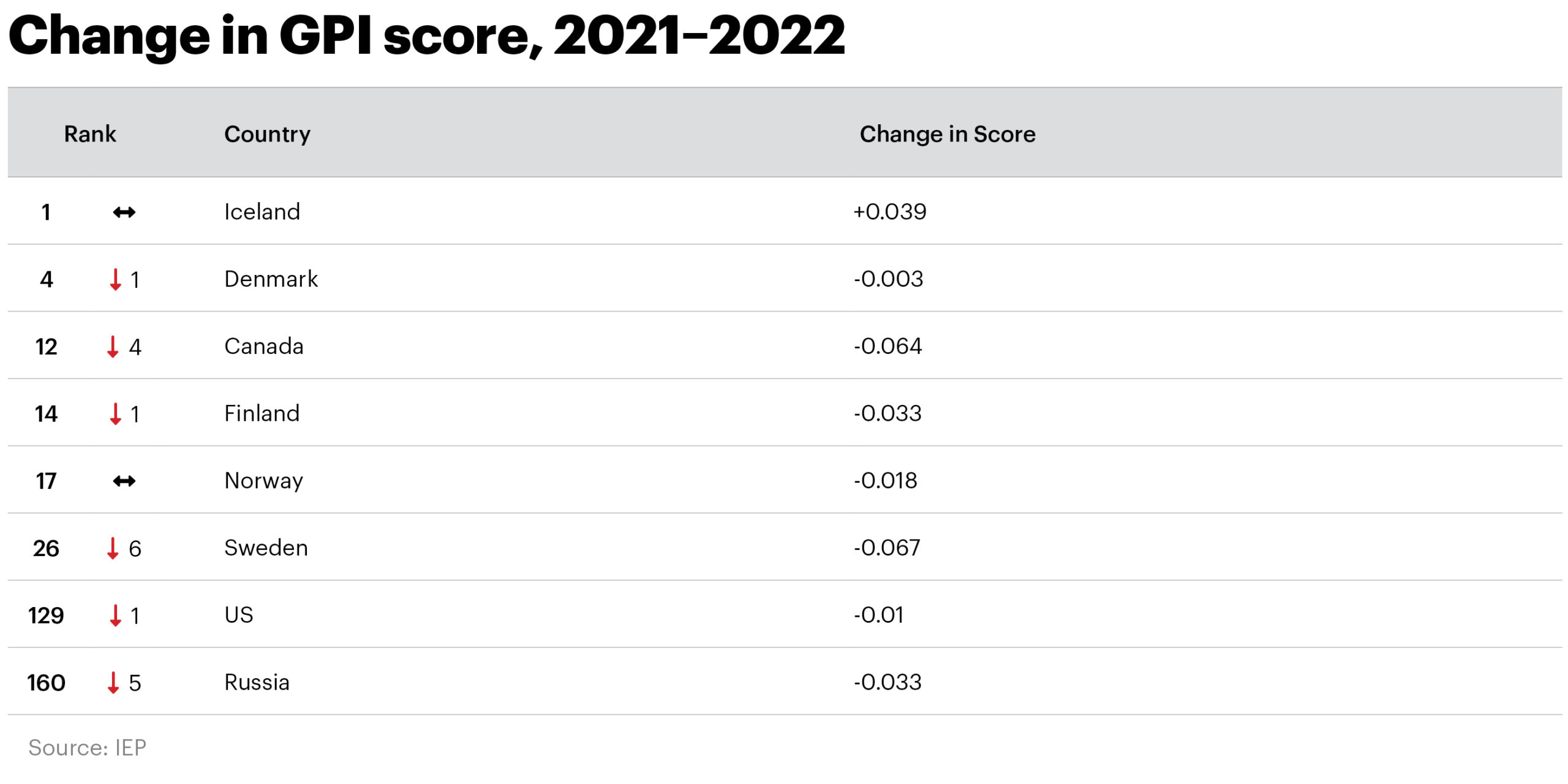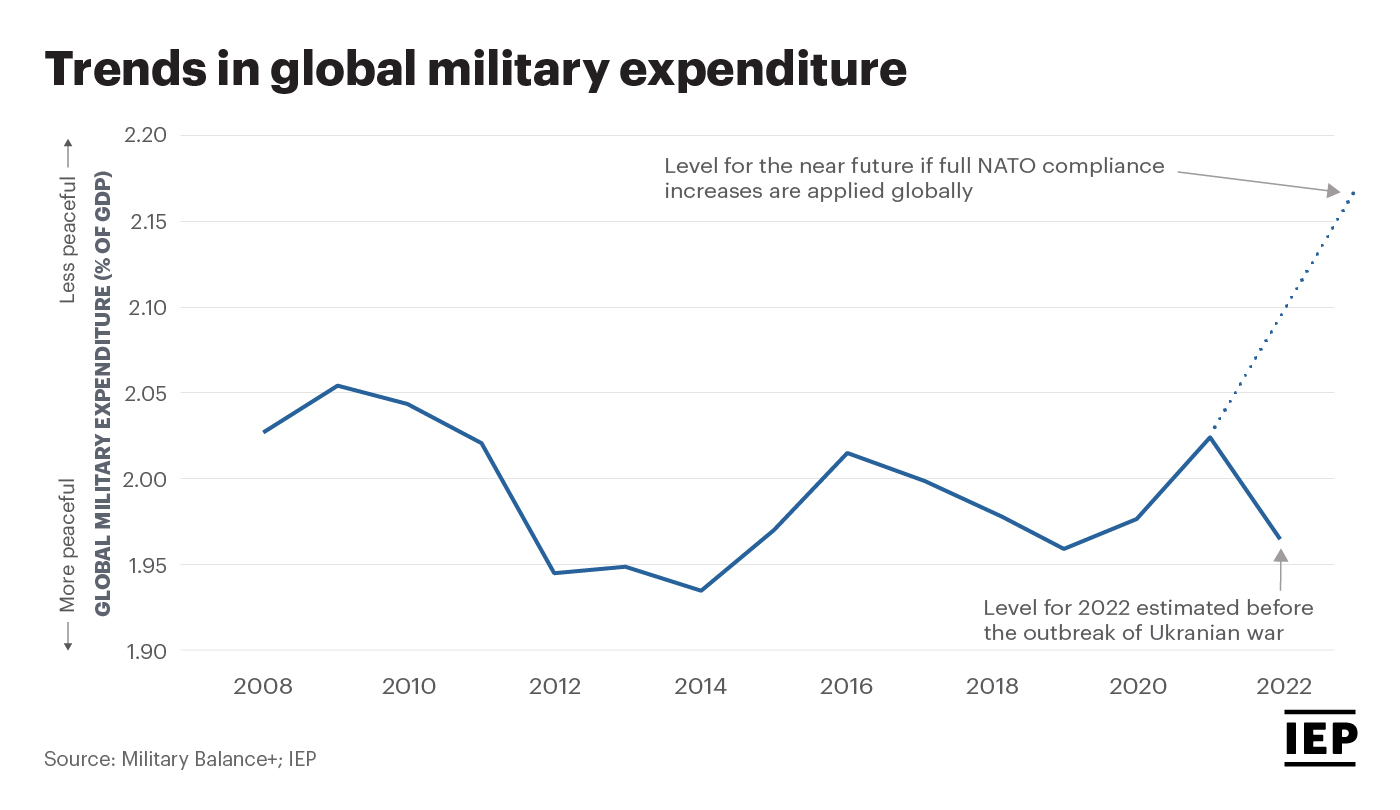The race for the Arctic has accelerated in recent years, with rising tensions and rising temperatures having the potential to further undermine global security. The region is fast becoming a staging post for a new Cold War, with the intersection of environmental issues and security issues particularly apparent.
The wealth of resources available in the Arctic means it is an area of interest for a number of significant players on the international stage. The Arctic is of critical strategic importance for both trade and security, with the area contested by NATO members and partners as well as the Russian Federation.
The events in Ukraine have meant that the competition over the Arctic has taken on even more geopolitical significance. Projections of changing climate conditions, including melting ice, have the potential to further catalyse instability within the region.
The Arctic region has historically been an area of cooperation. During the height of the Cold War, a time when tensions between the US and Russia were at their most strained, the Arctic remained a source of shared interest. Scientific collaboration on issues such as ecological degradation and environmental protections took place, and there was a significant effort from scientists and policy makers on both sides of the divide to work together.
Following the collapse of the Soviet Union, Arctic collaboration continued to gather pace. The US and Russia signed the Russian-American Long-Term Census of the Arctic treaty (RUSALCA) and engaged in a number of joint scientific expeditions in the Arctic. These collaborative efforts ceased in 2015 as antagonism between Russia and the US increased.
Russia’s relationship with the West appears to be in tatters at present, following Russia’s invasion of Ukraine and the West targeting Russia with unprecedented sanctions in response. Bilateral ties have been slashed and the relationship is at its lowest point since the Cold War.
The activities of the eight-member Arctic Council have ground to a halt in response to Russia’s invasion of Ukraine, with the majority of its member countries refusing to participate in meetings held by Russia. Even collaboration on scientific matters, which continued through the height of the Cold War, appears to have all but stopped.
Of the eight Arctic Council member states, not one country has risen in peacefulness according to 2022’s Global Peace Index (GPI).

Russia has experienced the fourth largest decrease in its score of peacefulness, falling by five places to rank as the world’s fourth least peaceful country. Other Arctic Council members have also experienced significant deterioration with Sweden falling by six places, Finland by one, Denmark by one and the US by one.
Canada fell by four places, dropping out of the world’s ten most peaceful countries for the first time in the history of the GPI. Iceland and Norway have remained in the same position, although Norway has deteriorated slightly in peacefulness overall.
The melting of the ice has also dramatically reduced the distance between Russia and NATO countries in the Arctic to a distance of about 100 miles, with the two military blocs right on each other’s doorsteps.
While there has been a global trend of decreasing militarisation since 2008, as highlighted by the GPI, the conflict in Ukraine has led to a massive military build-up by a number of countries. This build-up has been particularly visible in the Arctic region, where US-led NATO forces have begun engaging in Arctic military exercises with regional partners.

Due to increasing Russian belligerence, a number of Arctic nations have also accelerated plans to join NATO. This will likely have significant implications for the geopolitical situation in the Arctic. Finland and Sweden have begun their application for NATO membership; and should their ascension be confirmed, the length of NATO’s border with Russia will be doubled further heightening tensions.
The Russian response to the NATO build-up has been somewhat muted, perhaps as a result of the Russian military focus in Ukraine, although there are suggestions from a number of analysts that Russia is deeply concerned with these developments. Russia has also invested significantly in Arctic military capabilities in recent years; building a number of military bases, bolstering its nuclear capable Northern Fleet and strengthening its first-strike capabilities.
Along with this significant military build-up, there has been a widespread suspension of diplomatic ties and a significant breakdown in Russia’s relations with its Arctic neighbours.
In response to Norway’s participation in the international sanctions Russia is facing, Russia’s parliament recently announced plans to scrap a treaty signed in 2010 that aimed to reduce tensions between the two countries in the Arctic Ocean. This breakdown is just one example of the widespread rising tensions within the region.
If carbon emissions continue to rise at their current rate, by 2040 the Arctic will likely be ice-free during the summer. Apart from the ecological threats posed, this is also likely to have enormous geopolitical ramifications.
Currently some shipping routes are only passable with the use of highly specialised icebreaker ships. Should the Arctic route become ice-free, this route will likely become navigable by many commercial ships.
While these changes have the potential to damage the fragile Arctic ecosystem, they will also certainly impact supply chain logistics. These routes would offer lower delivery costs and faster delivery times for tankers and cargo ships, potentially reducing shipping times by up to 40%.
Currently Russia dominates the Arctic shipping routes; and an increase in shipping capacity in the region could offer the opportunity for Russia to increase trade with China, further strengthening their bilateral relationship.
This region holds an enormous amount of unexploited natural resources including about 13% of the world’s untapped oil, 30% of its undersea gas, and up to $1 trillion in metals and minerals (including many of the critical minerals used in electronics).
The potential wealth available from the Arctic region has intensified competition between Arctic nations, with areas such as the Lomonsov Ridge claimed by Russia, Greenland, Denmark and Canada.
This competition is unlikely to abate anytime soon. Unless there is a significant thawing in Russia’s relationship with the West, factors like these along with the increasing militarisation in the region have the potential to heighten tensions and trigger a significant security threat.